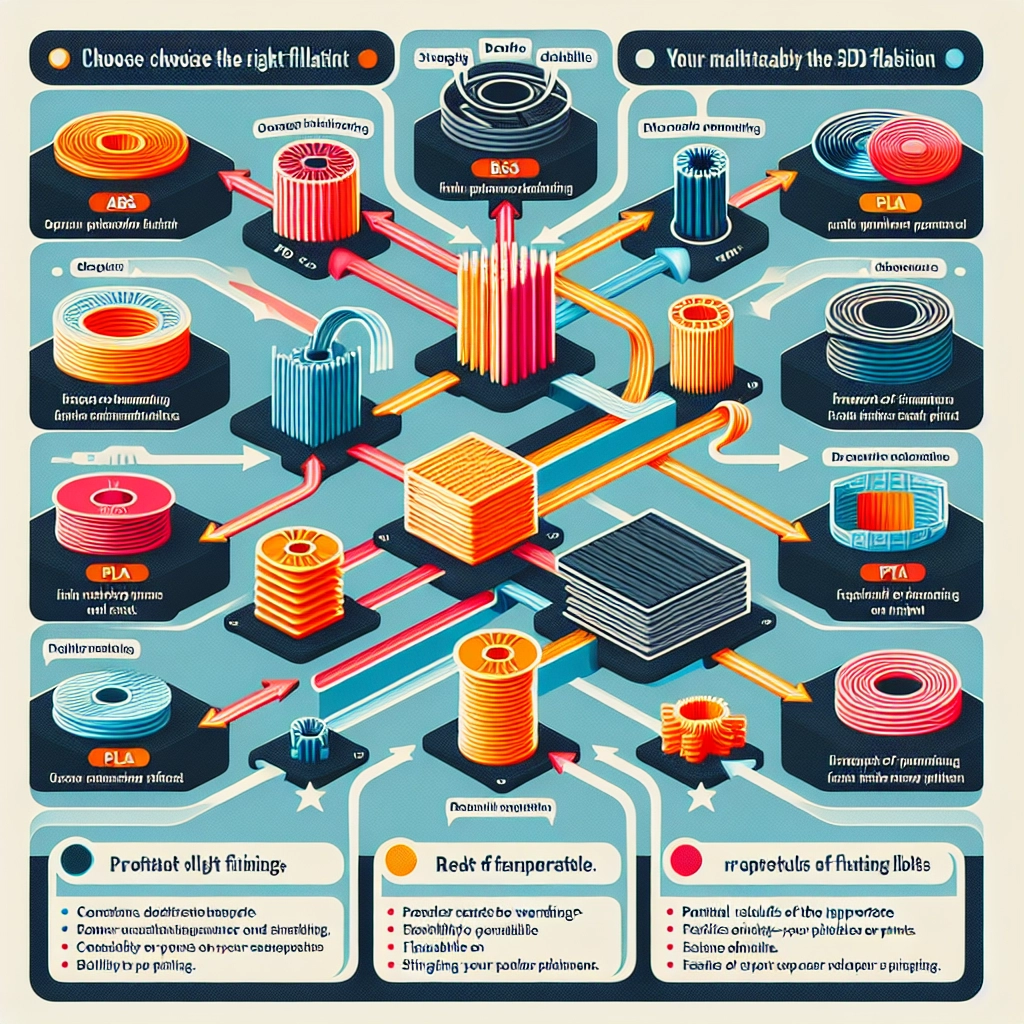When you dive into the world of 3D printing, one of the first things that may catch your eye is the variety of filaments available. From PLA to ABS, PETG to nylon, the options can be overwhelming. But here’s a little secret: the filament you choose can make or break your 3D printing experience and the quality of your final product. So, why is picking the right filament such a big deal? Let’s explore!
The Foundations of Filament
To understand why filament matters so much, let’s start with the basics. 3D printing, particularly Fused Deposition Modeling (FDM), involves melting plastic filament and extruding it layer by layer to create a 3D object. The filament material directly affects not only the print quality but also the strength, flexibility, and durability of the final object.
Imagine you want to create a sturdy phone case. If you opt for a brittle filament like certain types of PLA, you’re likely to end up with a case that cracks under pressure. On the other hand, using a more robust filament such as PETG could result in a product that not only looks great but will also protect your precious phone.
Different Types of Filament
Here’s a brief rundown of some common filaments and their characteristics:
-
PLA (Polylactic Acid): This is often the go-to filament for beginners. It’s biodegradable, comes in a vast array of colors, and is easy to print. However, it’s not as heat-resistant or durable as some other options.
-
ABS (Acrylonitrile Butadiene Styrene): Known for its toughness, ABS is a favorite for functional parts. It can withstand higher temperatures and is more flexible than PLA, but it also comes with a few drawbacks, such as warping during printing and the need for a well-ventilated area due to the fumes it emits.
-
PETG (Polyethylene Terephthalate Glycol-modified): Blending the advantages of both PLA and ABS, PETG is strong, durable, and has decent heat resistance. It’s a fantastic choice for those looking to print something that needs to stand the test of time.
-
Nylon: If you’re in the market for flexibility and toughness, nylon is hard to beat. It’s great for parts that need to bend without breaking, but it does have its quirks, like absorbing moisture from the air, which can affect print quality.
-
TPU (Thermoplastic Polyurethane): This flexible filament is perfect for printing rubber-like objects such as phone cases or toys. However, it can be tricky to work with due to its elasticity and tendency to jam in the extruder if not set up correctly.
Impact on Print Quality
Now, beyond the physical properties of the filament itself, the choice of material can also influence the print quality in various ways:
-
Layer Adhesion: Some filaments adhere better than others. For instance, ABS generally has excellent layer adhesion, making it ideal for parts that need structural integrity.
-
Print Temperature: Each filament has a recommended temperature range for optimal printing. Using too low of a temperature can lead to poor layer adhesion, while too high can cause stringing or even burning of the material.
-
Finish and Aesthetics: Different filaments also offer different finishes. If you’re printing something that will be visible, you might want to pay attention to how glossy or matte a specific filament will appear once printed.
Cost vs. Quality
While it may be tempting to choose the cheapest filament from the online marketplace, quality should never take a backseat. High-quality filaments tend to provide better consistency, fewer print failures, and superior aesthetics. In the long run, investing in good filament can save you time, frustration, and money.
Conclusion
In the ever-evolving landscape of 3D printing, the wrong filament can lead to misadventures in your project. From print quality to the durability of the final product, your choice of filament plays a crucial role in the overall success of your printing endeavors. Whether you’re crafting a decorative object or a functional part, taking the time to learn about the various filament options available can make all the difference. So next time you’re about to hit that “print” button, consider the filament you’re using—your future self (and the recipients of your creations) will thank you!

